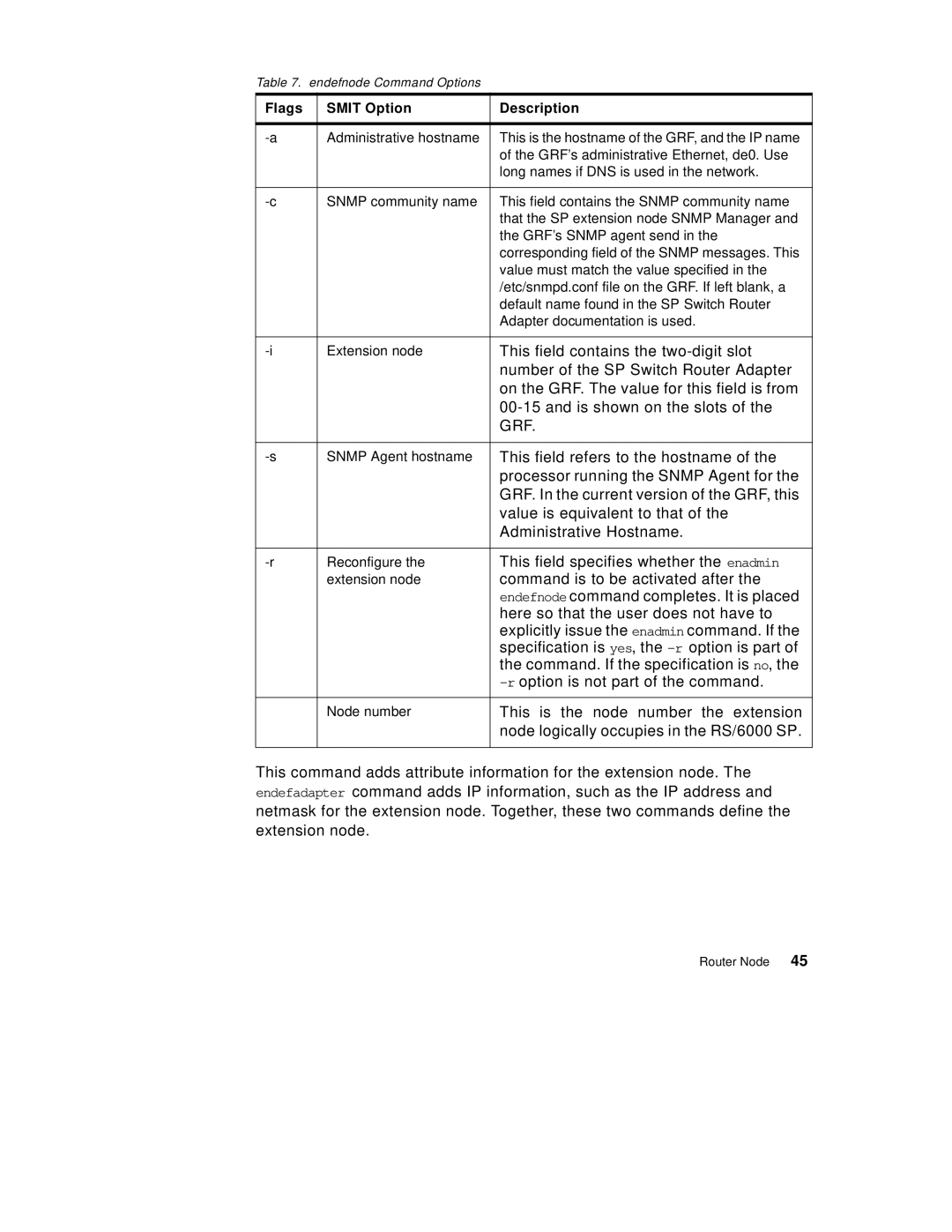Table 7. endefnode Command Options
Flags | SMIT Option | Description |
|
|
|
Administrative hostname | This is the hostname of the GRF, and the IP name | |
|
| of the GRF’s administrative Ethernet, de0. Use |
|
| long names if DNS is used in the network. |
|
|
|
SNMP community name | This field contains the SNMP community name | |
|
| that the SP extension node SNMP Manager and |
|
| the GRF’s SNMP agent send in the |
|
| corresponding field of the SNMP messages. This |
|
| value must match the value specified in the |
|
| /etc/snmpd.conf file on the GRF. If left blank, a |
|
| default name found in the SP Switch Router |
|
| Adapter documentation is used. |
|
|
|
Extension node | This field contains the | |
|
| number of the SP Switch Router Adapter |
|
| on the GRF. The value for this field is from |
|
| |
|
| GRF. |
|
|
|
SNMP Agent hostname | This field refers to the hostname of the | |
|
| processor running the SNMP Agent for the |
|
| GRF. In the current version of the GRF, this |
|
| value is equivalent to that of the |
|
| Administrative Hostname. |
|
|
|
Reconfigure the | This field specifies whether the enadmin | |
| extension node | command is to be activated after the |
|
| endefnode command completes. It is placed |
|
| here so that the user does not have to |
|
| explicitly issue the enadmin command. If the |
|
| specification is yes, the |
|
| the command. If the specification is no, the |
|
| |
|
|
|
| Node number | This is the node number the extension |
|
| node logically occupies in the RS/6000 SP. |
|
|
|
This command adds attribute information for the extension node. The endefadapter command adds IP information, such as the IP address and netmask for the extension node. Together, these two commands define the extension node.
Router Node 45
